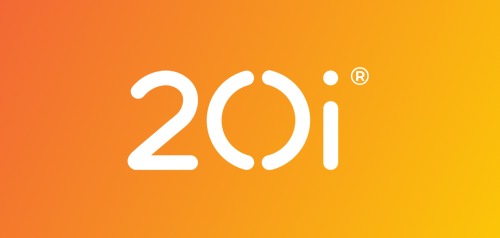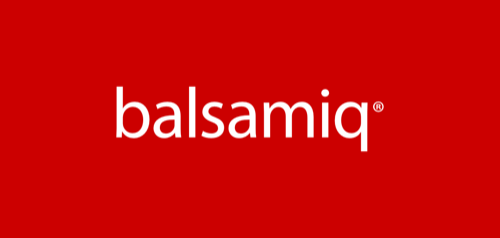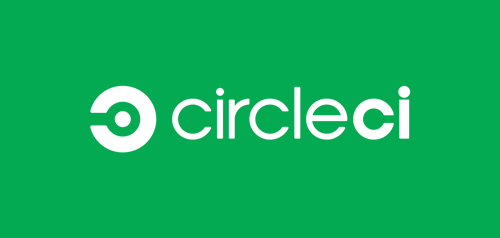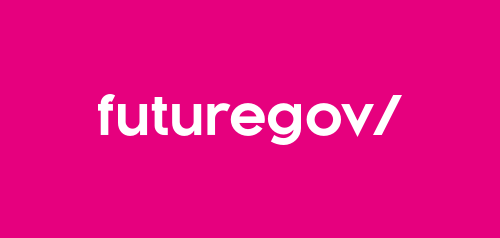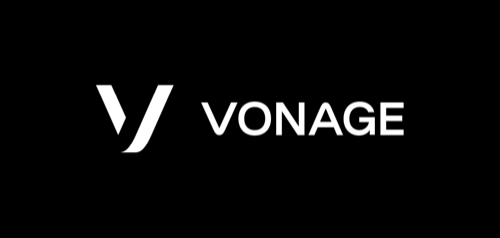Transcript
Follow my lead. Okay! Come on, Chandler. All right. All right, ready? Turn! Turn! Turn! [Laughter]. I don't think we can turn any more. I don't think it's going to fit. Up, up, up! [Laughter]. Here we go! Tip it! Tip it! Tip IT! TIP IT! [Laughter]. Shut up, shut up, shut up! [Laughter].
MALCOLM: So, for those that don't know, that's a clip from Friends. While most of that show has not held up, it does capture the pains of moving in New York, which I've done for the fifth time in seven years, and also the pains of pivoting in your career, which is what I will be talking about today. My name is Malcolm, and I completed my own pivot into product management and I will be sharing the methods I employed. I'm a classically trained actor who joined the space of arts performance, pivoted into writing, directing, acting, and coaching, while moving from theatre to film, and more professionally, joinder through the arts administration, education, and hospitality sectors to arrive where I'm at now, in user research. All of this I do through a lens of inclusion, and it is my hope to leverage arts and technology to build a more inclusive world through collective action and community.
So, without any further ado, grab your evening, afternoon, or in my case, morning, cup of coffee, and let's get the conversation started by first discussing your personal pitch. A question: how many facts about me can you remember from what I just said? I will give you a few seconds to think to yourself. Maybe you can jot them down if that is helpful. Do you have three to five facts in your head, or written down? If you have fewer than that, I haven't pitched myself very well. If you have more, I've done better than I could have hoped. A year into my first job, I famously gave a literal elevator pitch to a CEO to bankroll a Cinco de Mayo celebration. The point is, that we built Saas products for our users to produce their work. We had a number of Mexican and Mexican American artists producing our work, and my pitch was this is a fun way to educate our staff on the history of the festival, while also providing a direct link to the work we were doing by highlighting Mexican, and Mexican-American artists using our software, so building greater staff - and I famously love tacos and margaritas.
When the doors opened on our floor, I had conditional approval pending the review of the proposal which I had already drafted. Your pitch should go the same way, regardless whether or not you're in an actual elevator. What you're aiming to communicate is who you are, what you do, and why you do it. I always prefer to speak things into existence, but I do acknowledge that a framework you may want to use depending on your situation is who you are, what you want to do, and why you want to do it. A final point you might also want to communicate is how you do it, or how you want to do it. You should at any given time be able to speak on yourself using about three to five major keys, or key points while tailoring those points to your audience. As you can imagine, the equivalent of having a proposal ready is having a matching rÈsumÈ ready which we will talk about now. I want to call out here that I won't be going out rÈsumÈ-building, as it is often called, since I'm working as an assumption of you as viewers already built one to apply for roles in the past, acknowledging some may not be working currently for myriad reasons.
I will be discussing how take that rÈsumÈ's foundation and make it work for you especially in tandem with your self-pitch. Here, we have two versions of my current rÈsumÈ. On the left is the top-most page of a seven-page rÈsumÈ which includes my entire work history, and on the right, my current product manager rÈsumÈ which I would be comfortable sending to anyone at a moment's notice which highlights past work most relevant to product management. I know the photos are super small, so don't worry about reading the text, but the point I want to communicate is that the entire page on the left is distilled into the first six bullets only on the right. In this distillation, I've pulled out the things I've done and accomplished that are most relevant to product management specifically, and made sure to include product management key words. For example, I use the phrase "To define product requirements" rather than the phrase "To determine product needs", because while they essentially mean the same thing, the product community uses the first phrase relatively ubiquitously.
A quick pro tip about most applicant tracking systems. SEO works and search optimisation read against the use counts and phrase matching. Meaning if a job list analyses twice and performs data analysis three times, your rÈsumÈ needs to do the same amount to to get the best match available and not screened out. Because most job descriptions are written in the future tense, this means you will have to work particularly diligently and creatively to rework your descriptions of past work for keyword optimisation. There are certain ATSs that specifically require human review. An example of this is the Greenhouse ATS. If you see a job board with greenhouse.io, you can safely assume you have work to do optimising the rÈsumÈ.
You will also see my rÈsumÈ's headline is the same as I used in this presentation, and you see that this presentation uses the same colour story and fonts as my rÈsumÈ. I'm a person that likes speaking things into existence, so I would like to note that I was using this headline and calling myself a product manager well before I was in the role I am in now. It is technically the first time I've held the title. In this sense, I crafted my brand identity which I also carry over to my LinkedIn. Which brings me to my next topic, networking. At a high level, I believe networking is one of those things that no-one likes but everyone should be good at, similar to handling conflict. That said, there are ways to make networking work for you which can be especially helpful if you, like me, struggle with social anxiety, particularly when meeting new people, or in a position when you're making an ask.
So back to LinkedIn. Really quick, I want to point out that I was able to design my profile banner very simply and over, which is an app owned by GoDaddy, available on Apple, and - my being a Sagittarius, my love of nature, I applied my brand colours to it, and voila. There is a slight addendum of my pronouns which I typically choose not no include in application materials. Beyond this, your LinkedIn should mirror the one-page rÈsumÈ you're pitching into with the caveat any roles recently you feel would give a recruiter a sense of who you are and what would make it more likely for you to come up in a recruiter's search. For example, I don't include work in hospitality, but I list these roles in my LinkedIn because I have interested in working in hospitality tech in the future, and the company I work for has brand recognition in the hospitality industry. I don't list bullet rules like this. This is a tip of the iceberg as regards LinkedIn optimisation.
What I primarily want to focus on here is messaging which can be a tricky art in LinkedIn, and particularly because of who you are allowed to message and because of character limits they impose when you're not connected to the person. Again, I'm not going to give a spiel about all of the - to get to the point of messaging someone, or even drafting a more general networking message, although I'm happy to take questions about that during the Q&A, but I want to discuss specifically doing these things when making a career pivot because often it takes something a little more. On the left is my first outreach to someone. I've already met this person. But even if I hadn't, my request at the end is specific, and I've used the prior sentence to communicate why I'm requesting to connect, because he and I have no mutual connection, and there is a notable focus on working together because he was seeking ... he responded, "Hey, how can I be helpful?" I responded on the right, again specific and to the point, although perhaps a bit more so this time.
You will notice that each of these three sentences. I wouldn't advise writing more than anyone, especially if you're hoping to meet them face to face. This was pre-pandemic, and while within the scope of the pandemic you might be inclined to ask for a Zoom call, please ask people for a phone call. Everyone is experiencing Zoom burn-out to some degree, and they will be more likely to respond positively to a phone call request. This particular exchange led to a scheduled meeting that never happened because this person ghosted me which also happens and that is another point I want to make. It is in your best interest to set and forget as much as you can in this process and try not to take things personally, which I know is difficult. People get busy and miss calls, or have a life emergency - you really just never know. That said, this person has continued to reinitiate contact and ghosted me for the best part of a year.
These people I recommend you choose to invest very little energy into. As the quote goes: when people show you who they are, believe them the first time. Not all connections are made equal, and that is about them, not you. Moving on, within the tech space in particular, a place where people are most likely to show the truest versions of their professional selves is Slack. Is it is a relatively messaging app work places use for - in recent years, these instances have also come to include ones not tied to specific places of work. I've noticed some here that are popular within the communities I belong to. On the left are friendly-based ones, and on the right are those domain. Within each of these are what Slack calls channels which are chat rooms for specific topics of conversation, that you can involve yourself in to get to know the Slack community, as it is called. You can DM an individual or group of individuals as well. Because these are professional digital spaces, they are dedicated to jobseekers, as well as specific industry functions that you can build and network within through interaction, and these work spaces also tend to host events digitally for now but also in person outside of a pandemic. You can continue to network there like in any other networking event.
The advantage of these spaces is that they're typically a bit more inclusive and less formal, so the networking is both more casual but often more effective. The energy is very friend of a friend. You can ease into conversations by simply reacting with an emoji in the beginning if you want, and finally, people tend to come and go from these spaces, so you can call the shots on your engagement without too much pressure. Here are two quick examples. On the left, you can see a DM exchange that someone initiated with me after a brief introduction I gave to the data science cohort I'm part of right now. Note the informality of the messaging. Then on the right, you can see me inside of a channel of Black people in the cohort letting me know about this event right now, and there are some emoji reactions, and a threaded comment response. If you're a part of historically excluded communities, and you're interested in learning data science, this programme is offered for free, and I can send you a referral link for the next cohort beginning in mid-April, applications in mid-March.
Finally as regards to networking, I want to discuss some email tips and tricks. Here I will be more general, so forgive me if you possess this knowledge. I find email to be the biggest black box overall, so I want to demystify it for anyone who feels the same way in in most situations, you will be emailing someone you're either connected to or that someone has introduced you to via email. You might also consider attempting to email a recruiting or hiring manager directly if you haven't heard anything from a company about a role you're interested in, assuming you're in the job-seeking phase of your pivot. Create a separate folder related to jobseeking, maintaining your signature, and finally installing Streak company if you're using Gmail. Streak allows you to see if anyone has viewed an email, where they've viewed it, and where they are if they're publicly sharing data. If you hover over the time stamps, Streak will show an exact time of each open, and this includes repeat opens. This is best applied for one-to-one emails since it does not disclose the identity of which party has opened the email at any time, including when emailing groups. The Streak example is tied to this email here. I was given someone's email on LinkedIn and was asked through that connection to email directly. The sub point there is always to meet the connection you're seeking where they are.
Personally, I prefer LinkedIn messaging to centralise my professional communication, but I don't want to let that get in the way of making a good connection, so I email when requested. The email's broken down into three parts. A brief introduction, a clarifying question about another request made by the connection in order to complete a referral, and finally a direct ask about advice on how to apply. Typically, these are questions I might ask on a call, but when someone asks me to email them, I assume that they are busy, so getting those questions answered via email is easier. As a general rule of thumb on networking, people want to help people, and most people enter into new roles in connections they presume to be weaker. My colleague Nicole and I went to college nearly a decade ago and she helped me make this connection, likely because we shared that background. I was asking about a time-sensitive application and this person was too busy to assist in time and I've got a connection for - another rule of thumb is to utilise all your connections. As you may well be aware, for this role, I spoke to three different people.
Here's another quick example. This one is a cold email where I attempted to directly email the hiring manager for a role I was interested in at Peloton. In this case, you can write more substantially, like a mini version of a cover letter. I've linked to my LinkedIn, and the role I've applied to in the first sentence. Then I've acknowledged I'm reaching out directly. Then I give a tailored version of my self-pitch as we spoke about earlier, and wrap up by noting that I attach my application materials which I've already submitted. The result of this message was that I was returned a rejection later that day. I do believe that if you receive a rejection, you're on to something, especially the larger the company is. The worst part is the not knowing, so I took it as a win that I got my answer. In the future, I can also use this email as a story point for future applications to Peloton. I would not use this method liberally, but you can typically assume that a person's email is first name and last, in the meantime, at company domain or vice versa.
Given the state of the world being mid- pandemic, I've made a large assumption that you as viewers may be looking for the next thing, or moving on from your current place of employment as you accomplish your career pivot. I hope I've given advice that can be done for a functional career pivot, or an industry career pivot, such tech to research like I've done as well. That said, this section will be covering items related to functional career pivoting within an organisation but I hope there are lessons in here how to self-advocate within a work place. When looking to enter into a new foundation, you should first deliver on what you were hired to do. Many of us take jobs to get a foot in the dare somewhere, but it's unrealistic to think without living up to any movement without living up to the promise of initial employment. You should show up for other colleagues. Sit in on optional meetings, attend optional events and engage with your peers.
Do this outside of the work too. A number of my colleagues are on this call right now doing this exact thing and it's not something I will soon forget. Celebrate your peers. There is a practice in the radical candour approach to feedback that encourages professionals to praise in public and criticise in private. My personal feeling on that is that it is important to praise your colleagues privately too. Do it in rooms they're not in when management is present, on a separate but related note, I think it should be considered appropriate to respectfully criticise in public, especially in the form of questioning authority. Essentially, I don't know very many people who appreciate a person who does one thing in - in life, you get what you give.
In so far as that is true been when you are a person that is comfortably and consistently performing three items that I just mentioned, beginning to underhand to colleagues in the function that you hope to enter into. There should be no task too small to help you help out with. I helped data cleaning, bug reporting, QA, and a number of other items well before I was required to do any of those things as part of my job. The trick here is to do it so well that it becomes an unofficial need for you to perform this function in order to keep the business running. This strategy is more easily put into play the smaller the company is, but there are ways to do it at a company of any size.
Once you've done this, you can start laying further groundwork to request a promotion, lateral or otherwise, and/or a title change. When you are in a position to specifically request a promotion or title change, you certainly want to have done your research. You can do this as you increase your responsibilities as the two often go hand in hand. First, you must research the company you already work for. While I'm not encouraging you all to take on a level of ownership disproportionate to your role, you should put yourselves in the role of any stakeholder who can be a deciding factor. At minimum, this is the team you would be leaving and the team you would be joining, the person that would be your old manager and the person who would be your new manager, and HR. Understand the business impact of your move and frame for yourself how you would justify it.
At the same time, you should begin researching the function itself internally, but also externally, especially when there is no current precedent for the function existing at your institution, which is more common the nearer your function target is to the job market. This includes salaries, events, and training courses. Depending on what you know of the stakeholders you've identified, your next step is to begin communicating your desire to change functions to the person that you believe would be your biggest advocate and who you trust to be the most honest with you. Based on this communication, you should understand whether the eventual pitch you need to make is centred around an immediate pivot or whether further actions would be necessary to make that pivot possible. This is when you will want to draft a proposal.
A solid base for this proposal will include evidence of your past work, the supportive business need with your talent being the solution, a proposed new title and job description especially if the function hasn't existed at this organisation, a proposed salary, a transition plan, and if deemed necessary, a training plan, including your commitment, especially financial, and any request of financial commitment from the organisation with detailed notes about employee and training pricing offers if necessary. Once this has been drafted, go back to your advocate and any other trusted peers. Treat it like a script and solicit notes and feedbacks. Once you've got it to the right place, you will know, and at that time it's the best time to make the formal request.
Out of the stakeholders you have identified, further identify the key decision makers and request a meeting with them. Share a brief agenda and attach the proposal. I historically share an appendix showcasing my research. You might find that helpful. Request a meeting between one and two weeks away so you can ensure they have had time to get up to speed on your proposal, and so that you have time to prepare. In the window between the request and the meeting, you should spend any available moment drilling responses to practice questions, i.e. treat the meeting lying an interview. You should also spend time preparing yourself not to have any answer in that meeting, but to eventually, and sometimes in that meeting, have any possible answer. If they've hired the role before, they may tell you to wait for it to open up again. It may be requested that you take on additional training or responsibilities to ensure you're up to the task. They may just say yes, and they may also just say no.
Prepare for anything. You are Beth Harman playing ... . In the spirit of preparing yourself for anything, I want to take some space to focus on an outcome where you're not only told no, but given no support to eventually turn that no into a yes. By which I mean you received no feedback, told it's not possible, and no way to build a plan to make it possible in the future. While I wish more companies were holistically to support the professional development of their staff, the grim reality is these institutions are few and far between which is an entirely separate conversation. I've learned that cannot change a company that revealed itself to be this way after you've taken the steps I've laid out, and the only answer is to return the volley to stop doing the things that were outside of your job description. Start the process of networking your way out of your institution. Narrow your focus within your current place of employment to be laser-focused in the scope of your role of job title, and steel yourself for negative responses. I don't say these things to scare you away from pursuing your goals, but I say them from experience that you can best prepare yourself for what it takes.
The founder of the hospitality groups I works believes they should hire 51-per-centers, that 49% - what I've shared today is that 49%. The remaining 51% is confidence that cannot be bought or taught, but hopefully you will - the world is designed to gas at you in every turn, and if you do not believe in yourself until the bitter end, people will see that and exploit it. If you are earlier on in your career, please remember that the most important references you have from any institution are more likely your own peers than management. As you experience the struggle that comes from all of this, and there will be many, it is important that you find self-care strategies that work for you. If you like, think of yourself as an athlete that needs to be able to compete at a moment's notice. You have to know when to give 120%, versus when to give 50%. And more importantly than that, when to rest. I'm easily the busiest person I know, and what I try to communicate to everyone how I do it all, I'm able to do so as a result of practising self-care and being gracious with myself. Those things come first and are not a response to burn-out. You must be proactive in this sense, and, ultimately, no one in an organisation will take care of you like you take care of you.
One of the things that enables me to practise self-care successfully is maintaining a schedule. I was unemployed from February until September last year, but was busier than I was. This is a sample week in my calendar. A few notes on what is included that have helped me. One, the first thing in my calendar every morning is some form of exercise. I refer running on the treadmill, so while it says gym, I was learning to run outside again, or doing an indoor HIIT workout. Over breakfast, I would start my day by journalling, and checking on my email. Not naturally a morning person, but sticking to this routine got my brain working and allowed me to maximise my productivity which I also want to say is just not something that is necessarily laudable, especially as we work to survive in this pandemic. The yellow boxes were applying for jobs, large green boxes for studying web development, and the blue boxes were meetings or social engagement. Many are recurring like the BIPOC network I attended during the summer, and the app I'm working on, and hopefully launching on this weekend.
Further still, I meet with my Dungeons and Dragons group on Friday night. It is important to have regular social interaction. This week includes my first user interview on Wednesday. An important note on all of this is that outside of interviews or meetings, everything else in my calendar is subject to change. If I don't feel like working out one day, guess what I'm not doing. If I'm exhausted and burnt out from meetings, even most of my social plans are - and I'm an extrovert in all of this. You have to prioritise at all costs because, if you don't, you will pay the cost. You know that you have to put your mask on first before helping anyone else, and that is when we're in a pandemic. That's all I have for you today. There are an slew of other things I'm happy to share about accountability, goal-setting, so if you would like to connect, my URL is there. My email is there also for you. On the right is a QR code you can scan to take you to a short feedback form for this presentation, and I would appreciate any you have to give as it helps me help other people. Thank you to the spore speakers, and to the organisers and hosts. It is so critical to have accessible spaces to have these conversations, and I'm grateful you've included this conference for all of us to learn. There should now be time for a brief Q&A.


